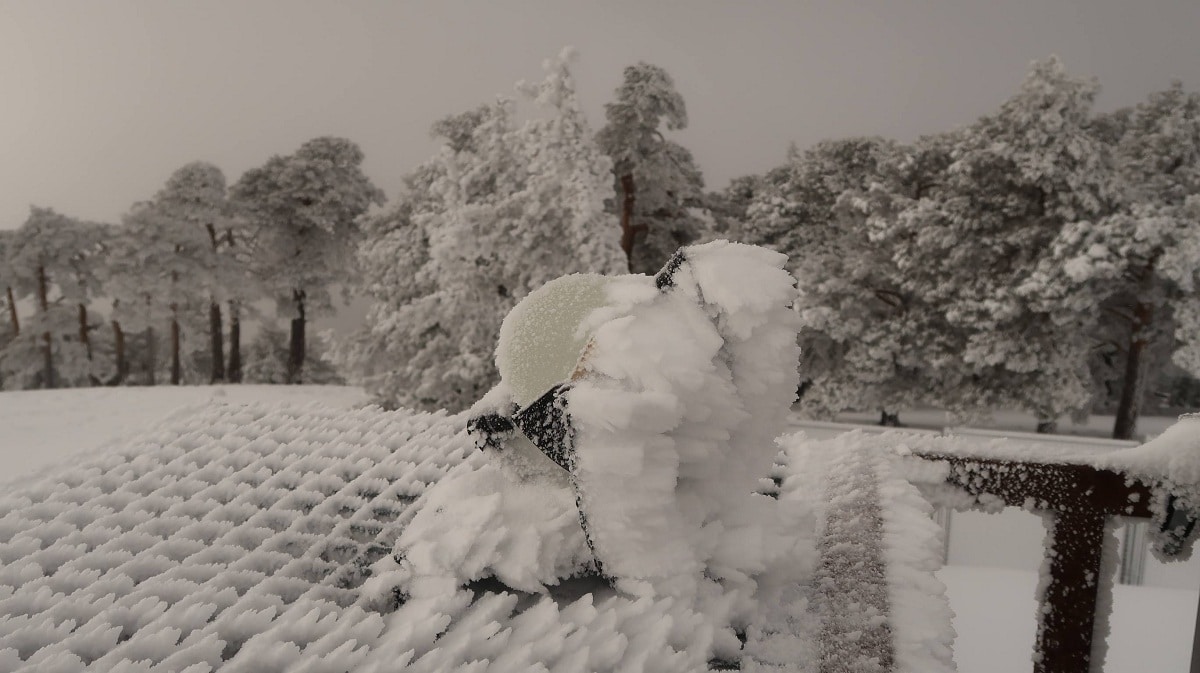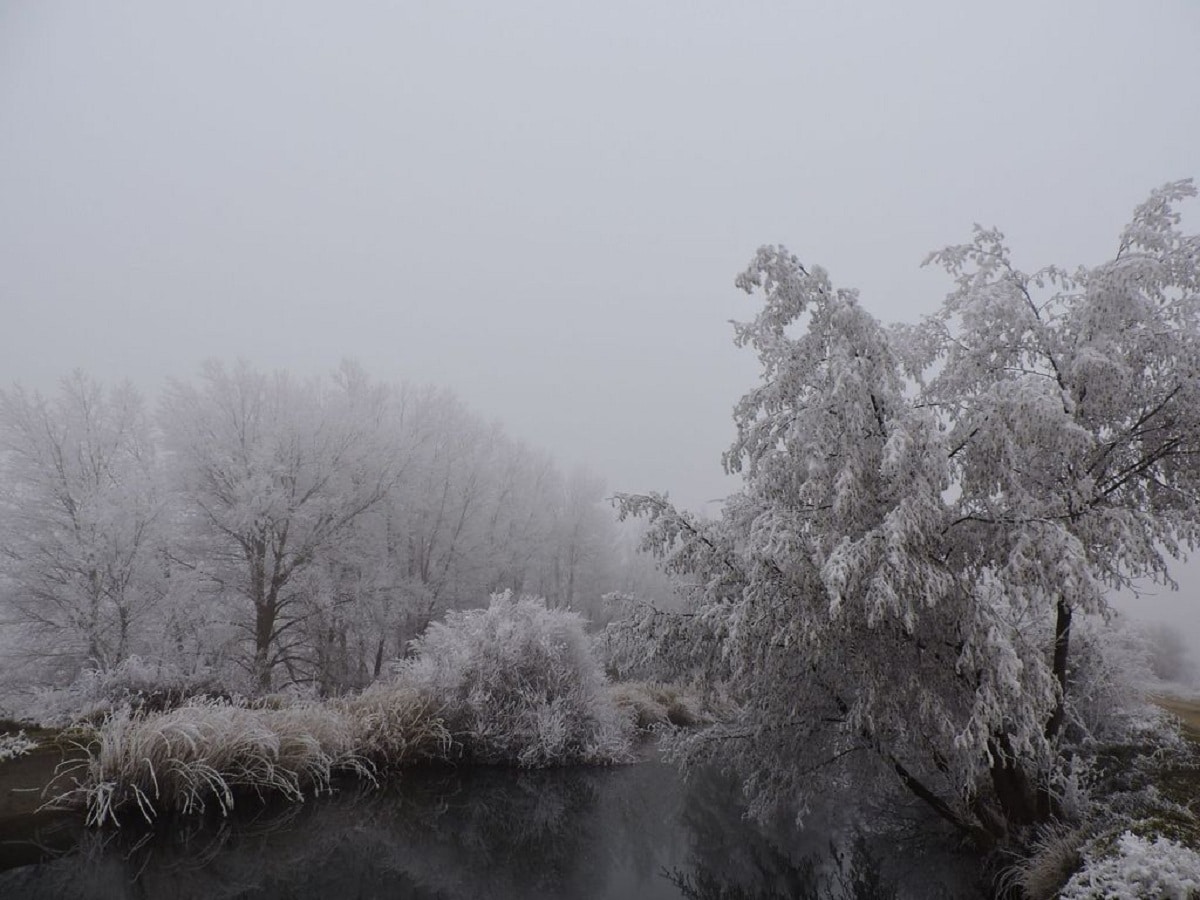
There are some winter weather events that are weirder than others. In this case we are going to talk about the rime and the frost. These are crystalline figures that appear especially on the coldest winter mornings. There are big differences between rime and frost that often confuse people.
For this reason, we are going to dedicate this article to highlighting the differences between rime and frost.
Differences between rime and frost

Chiselladas and frost usually occur during the anticyclone season, on calm and windless days. These conditions favor the rapid dissipation of heat from the ground. This phenomenon occurs at night, and we usually find it the next morning, in cars and in vegetation, with layers of ice that remind us of snow.
When the sun sets and it gets dark, the temperature tends to drop and the land begins to cool. The cooler air is denser and sinks to the lower layers and begins to cool with the surface. Both humidity and temperature play an important role. The relative humidity of the air must be greater than 60% and the surface temperature must be less than or equal to 0ºC. In this way, the water vapor is converted directly into ice crystals, which we call frost.
Although the process is similar, when strong winds form, banks of fog are likely to form. White smog, which appears on anticyclone days, is cold and calm. This phenomenon occurs when the "dew point" is below the freezing point, where fog is produced where the temperature is colder. Small drops of water, suspended in the fog, are submerged, and when they come into contact with the surface they are trapped, forming those small shiny crystals. Here, the wind is prominent, and when it blows, it deflects the formations at will and can create a kind of "ice flag", "feathers" and impressive "spires" to photograph.
Where is the rime formed

It is a meteorological phenomenon that occur when the fog freezes. When there is cold and persistent fog caused by high humidity, the rime usually occurs. Many photographers take advantage of this type of phenomenon to make fascinating photos. It usually occurs in areas where there is dense fog and temperatures drop below 0 degrees. At these temperature values the dew point is below the freezing point.
It is at this moment that the levels of water that are floating in the air begin to freeze on the surfaces of the area. We remember that water needs a surface to be able to freeze. Therefore, micron-sized sand particles are needed to act as a hygroscopic condensation nucleus. When water droplets begin to freeze on surfaces they form plumes or needles of soft ice. These formations are similar to snow but are not quite the same.
A place where a gale has taken place is very similar to another place where it has snowed. Nevertheless, if we approach the surfaces of rocks, tree branches, leaves, etc. We can see these small needle and plume type formations of ice caused by the frozen fog. The cities and towns of Spain that have a nearby river are the most likely candidates for this phenomenon to occur. It is one of the reasons why the cencellada takes place frequently during the winters in Valladolid or Burgos.
And it is that the rivers are a constant source of humidity in the environment. In addition, thanks to the constant water flow a fairly dense flora develops that helps retain environmental humidity. When there is a contrast of day and night temperatures, this type of dense fog usually occurs and, thanks to the flora, it is usually retained. If the ambient temperature drops below 0 degrees, the storm surge is more likely to take place.
where does frost form

On nights with clear skies, windy or calm winds, and somewhat humid air, the Earth cools due to radiation, as does the air that remains on the ground. Water vapor contained in clean air near the surface cools and produces droplets that they condense into droplets that appear on leaves, grass, straw, etc. So we have dew.
The temperature at which a vapor (gas) turns into a liquid (water droplets) is called the "dew point temperature." The dew drops are uniform in size and less than a millimeter in diameter.
On a calm and peaceful night, the air can become noticeably cold, reaching sub-zero temperatures; then the water vapor goes directly to the ice crystals and we have frost. The grass, the straw, the ridges of the furrows, the ridges of the roofs, etc., appeared white in the early hours of the morning, it seemed that it had snowed, but nobody confused it, because the sky was clear all night. Farmers sometimes call these frosts "frosts."
There is a third process in which dew drops are formed (temperature above 0°) and then these droplets freeze (temperature below 0°); It is called "white dew". Here, the vapor (gas) becomes liquid (droplets) and then freezes (ice). It is a process similar to the one that causes the formation of hail, only that the latter occurs in powerful clouds that develop vertically. When dew forms, the air, although cold, is above 0° (for example, 3° to 5° C); for frost to form, the air must be below 0° (-2° to -4° C).
Dew is usually seen during the equinox and fall, while frost is a typical spring and winter meteor. Dew and frost generally occur in lowlands and plains, where humidity is usually higher.
In spring, after a heavy frost or dew, at dawn, because the air is so clear, the condensation quickly evaporates, stealing evaporative heat from buds, leaves and flowers, causing a dramatic drop in temperature. This affects these delicate plant organs. They are called evaporation frosts and are therefore feared by farmers on the verge of spring.
I hope that with this information you can learn more about the differences between rime and frost.